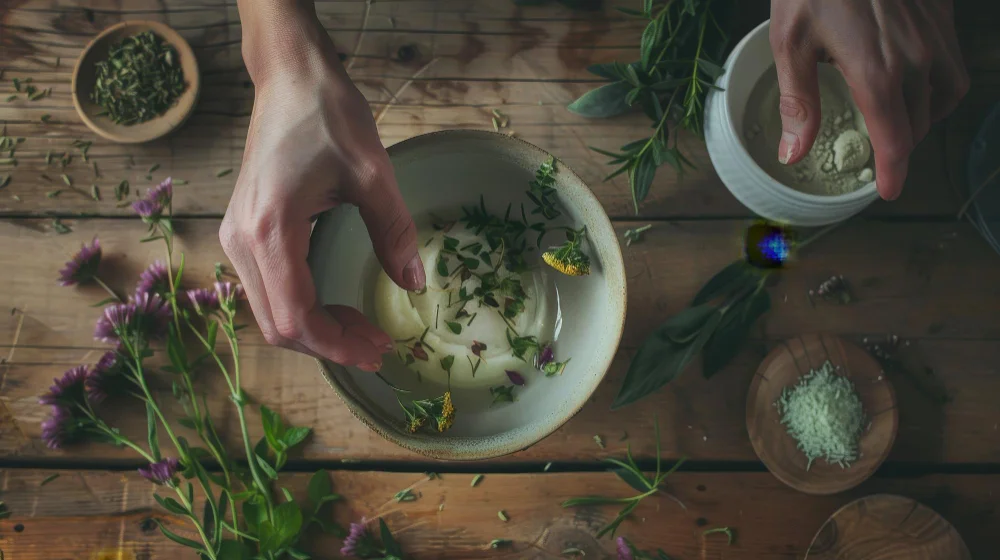In an era where natural remedies are gaining traction, Ceñillin stands out as a traditional healing herb with a rich history of medicinal use. While ancient cultures have long celebrated its health benefits, this herb is experiencing a resurgence as modern society looks for holistic alternatives to pharmaceutical treatments. In this article, we will explore Ceñillin in-depth, covering its history, health benefits, challenges in the modern world, and how to use it safely.
What is Ceñillin?
Ceñillin is a medicinal herb known for its potential therapeutic properties. Native to various regions, particularly in Central and South America, it has been used for centuries in traditional medicine to treat a variety of ailments. The herb is particularly valued for its anti-inflammatory, antioxidant, and antimicrobial properties, which make it useful in treating conditions like digestive issues, skin problems, and respiratory concerns.
In modern wellness trends, Ceñillin has found its place alongside other natural remedies, being used both as a supplement and in herbal teas. Although more research is needed to fully understand its medicinal value, its potential is promising.
Key Characteristics of Ceñillin
Botanical Features
Ceñillin is typically found in tropical climates and thrives in moist, well-drained soil. It is a hardy herb with distinctive leaves, which are often deep green and may feature lighter veins. The flowers of Ceñillin are small, often white or pale yellow, and the plant’s roots are harvested for medicinal use.
Chemical Composition
The medicinal properties of Ceñillin are attributed to its complex chemical composition, which includes flavonoids, alkaloids, and essential oils. These compounds contribute to its anti-inflammatory and antimicrobial actions, making it a powerful tool in traditional medicine.
Historical Background of Ceñillin
Ceñillin has been an integral part of indigenous medicine for centuries. In many native cultures, the herb was considered a remedy for ailments ranging from digestive disorders to skin infections. Traditional healers would craft poultices, teas, and tinctures using Ceñillin’s leaves and roots, relying on its potent medicinal properties.
Historically, the herb was also used in spiritual rituals, believed to possess protective qualities. It was passed down through generations, with the knowledge of its use being shared among community members.
Ceñillin in Indigenous Culture
For indigenous cultures, Ceñillin was more than just a remedy—it was a symbol of health and wellness. Healers often used it in conjunction with other plants and natural substances to treat patients holistically. In many South American communities, Ceñillin was revered as a sacred herb, and its usage was accompanied by rituals aimed at restoring balance between body, mind, and spirit.
These cultural practices provided the foundation for the modern resurgence of Ceñillin. As global interest in natural healing grows, many people look to indigenous wisdom to rediscover the benefits of plants like Ceñillin.
Modern Research on Ceñillin
While Ceñillin has been used for centuries, modern scientific research on the herb is still in its early stages. However, some studies have shown promising results regarding its medicinal properties. Researchers have focused on its potential for reducing inflammation, improving skin health, and supporting digestive health.
Some of the key areas being explored in modern research include:
- Anti-inflammatory Effects: Preliminary studies suggest that Ceñillin may help reduce inflammation in the body, which is linked to a variety of chronic diseases such as arthritis and cardiovascular conditions.
- Digestive Health: Ceñillin is thought to have soothing properties that can help alleviate symptoms of digestive disorders like bloating, indigestion, and irritable bowel syndrome (IBS).
- Skin Health: Topical application of Ceñillin extracts has been suggested to promote skin healing, reduce irritation, and combat acne due to its antimicrobial and anti-inflammatory properties.
Health Benefits of Ceñillin
Ceñillin is praised for a wide range of health benefits. Some of the most well-documented benefits include:
1. Anti-Inflammatory Effects
One of the most significant health benefits of Ceñillin is its ability to reduce inflammation. Chronic inflammation is linked to many health conditions, including heart disease, diabetes, and autoimmune disorders. Ceñillin’s anti-inflammatory compounds help soothe the body and support the immune system.
2. Digestive Health
For centuries, Ceñillin has been used to support digestive health. The herb is believed to help with common digestive issues, such as bloating, gas, and indigestion. Its soothing properties make it a valuable remedy for those suffering from gastrointestinal discomfort.
3. Skin Health
Ceñillin’s antimicrobial and anti-inflammatory properties also extend to skincare. It is used in various cosmetic products for its ability to treat acne, reduce skin irritation, and promote healing in wounds or burns. When applied topically, Ceñillin helps calm inflamed skin and support the body’s natural healing processes.
4. Respiratory Support
Ceñillin is also believed to help with respiratory issues. In traditional medicine, it has been used as a natural remedy for conditions like coughs, asthma, and bronchitis. It is thought to help clear mucus from the airways and soothe irritated respiratory tissues.
Modern Uses of Ceñillin
In the modern world, Ceñillin is used in a variety of forms, including:
- Teas: One of the most common ways to use Ceñillin is by brewing it into a soothing tea. The herb’s anti-inflammatory and digestive benefits are especially effective when consumed in this form.
- Capsules and Supplements: Ceñillin is available in capsule or tablet form as a dietary supplement. These provide a more concentrated dose of the herb’s active compounds.
- Topical Creams: For skin health, Ceñillin is often included in creams, lotions, and ointments designed to treat acne, irritation, or wounds.
How to Incorporate Ceñillin into Your Routine
To incorporate Ceñillin into your wellness routine, you can start by adding Ceñillin tea to your daily regimen. It’s a simple way to reap the digestive and anti-inflammatory benefits. If you’re looking for more targeted effects, consider using Ceñillin-based creams or supplements, especially if you’re dealing with skin issues or digestive discomfort.
Before using Ceñillin, it’s important to consult with a healthcare provider, particularly if you’re pregnant, breastfeeding, or taking other medications.
Modern Challenges for Ceñillin
Despite its long history of use, Ceñillin faces several challenges in the modern world:
1. Sustainability and Overharvesting
Ceñillin grows in specific regions, and overharvesting has become a concern. To ensure the herb’s long-term availability, sustainable farming practices must be adopted to prevent depletion of natural resources.
2. Lack of Scientific Research
While there is growing interest in Ceñillin, more rigorous scientific studies are needed to fully validate its health claims. Modern research must provide stronger evidence to confirm the herb’s efficacy.
3. Regulatory Hurdles
In many countries, natural herbs like Ceñillin face regulatory challenges, particularly when it comes to safety standards and quality control. These hurdles can limit access to the herb and delay its use in mainstream wellness products.
4. Preservation of Indigenous Knowledge
The traditional knowledge about Ceñillin and its use in indigenous communities is at risk of being lost. It’s crucial to document and preserve this wisdom to ensure the herb’s continued role in natural healing practices.
Safe Usage Tips for Ceñillin
- Dosage: Start with a small dose to assess how your body reacts. Too much Ceñillin can cause digestive discomfort in some individuals.
- Consult with a Healthcare Provider: Always consult with a healthcare provider before using Ceñillin, especially if you have underlying health conditions or are on medication.
- Quality Matters: Choose high-quality Ceñillin products from reputable sources to ensure purity and potency.
Conclusion: The Future of Ceñillin
Ceñillin is a powerful, time-tested herb with a wealth of potential benefits. While more research is needed to fully explore its medicinal value, it’s clear that Ceñillin has a place in modern wellness. By focusing on sustainable practices and validating its health claims through research, Ceñillin can continue to be a valuable resource for those seeking natural healing alternatives.
FAQs About Ceñillin
1. What is Ceñillin, and what is it used for?
Ceñillin is a traditional herb used in various cultures for its anti-inflammatory, digestive, and skin-healing properties. It’s commonly used in teas, capsules, and topical creams.
2. How do I use Ceñillin for health purposes?
You can use Ceñillin in tea form, as a supplement, or apply it topically through creams and lotions for skin issues.
3. Are there any side effects of using Ceñillin?
Ceñillin is generally considered safe when used properly. However, it may cause mild digestive discomfort in some individuals. Always start with small doses and consult with a healthcare provider.
4. Where can I buy Ceñillin?
Ceñillin can be found in herbal stores, online retailers, and wellness shops, often in tea, capsule, or cream form.
5. Is Ceñillin safe for daily use?
When used appropriately, Ceñillin is safe for daily use. However, moderation is key, and it’s important to consult with a healthcare provider, especially if you have underlying health conditions.


